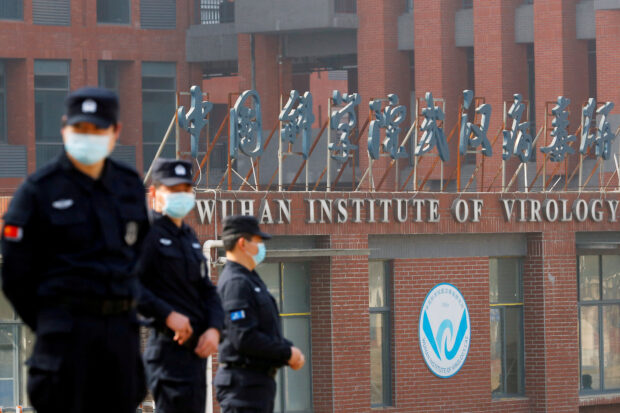WHO, advisors urge China to release all COVID-related data after new research

Security personnel keep watch outside the Wuhan Institute of Virology during the visit by the World Health Organization (WHO) team tasked with investigating the origins of the coronavirus disease (COVID-19), in Wuhan, Hubei province, China, February 3, 2021. (REUTERS)
New sequences of the SARS-CoV-2 virus, as well as additional genomic data based on samples taken from a live animal market in Wuhan, China in 2020 were briefly uploaded to the open access GISAID database by Chinese scientists earlier this year, allowing them to be viewed by researchers in other countries, according to a Saturday statement from the WHO’s Scientific Advisory Group for the Origins of Novel Pathogens (SAGO).
The sequences suggested that raccoon dogs were present in the market and may have also been infected by the coronavirus, providing a new clue in the chain of transmission that eventually reached humans, according to the WHO.
Access to the information was subsequently restricted “apparently to allow further data updates” by the Chinese Center for Disease Control and Prevention (CDC), the statement added.
WHO officials discussed the matter with Chinese colleagues, who explained that the new data were intended to be used to update a preprint study from 2022. China’s CDC plans to re-submit the paper to the scientific journal Nature for publication, according to the statement.
WHO officials say such information, while not conclusive, represents a new lead into the investigation of COVID’s origins and should have been shared immediately.
“These data do not provide a definitive answer to the question of how the pandemic began, but every piece of data is important in moving us closer to that answer,” WHO Director-General Tedros Adhanom Ghebreyesus said on Friday. “These data could have – and should have – been shared three years ago.”
“We continue to call on China to be transparent in sharing data, and to conduct the necessary investigations and share the results,” he said.
SAGO was tasked by the WHO to continue to investigate the origins of the pandemic that has killed nearly 7 million people worldwide.
The Chinese CDC did not immediately respond to the WHO’s latest statement.
‘TOO EARLY’ FOR CONCLUSION
When asked by Reuters why the sequences were not uploaded before, George Gao, professor at the Institute of Microbiology at the Chinese Academy of Sciences and former head of the Chinese CDC, said the data uploaded were “nothing new.”
He added that GISAID, the Munich-based pathogen database, took down the sequences, not the Chinese scientists, and that he was in contact with WHO.
It’s “too early for any conclusion,” he added in an emailed statement. “All this must be left for scientists to work on, NOT for journalists or public. We are eager to know the answer.”
A spokesperson for GISAID said it does not take down data. They said the sequences had been “recalled” and “are currently being updated with newer and additional data as part of a manuscript currently under review”.
The Huanan Seafood Wholesale Market in Wuhan was shut down by Chinese authorities after the novel coronavirus emerged in the city in late 2019. The market has since been a focus of study of whether the virus had infected several other species before jumping to humans.
The WHO and other scientists have also said they cannot rule out the possibility that the virus emerged from a high-security laboratory in Wuhan that studies dangerous pathogens. China denies any such link.
The 2022 preprint paper said that a small portion of 923 samples collected from the stalls and sewage systems in and around the market tested positive for the virus; no virus was detected in 457 animal samples tested. The paper said initially that raccoon dogs were not among the animals tested.
The new analysis suggests “that raccoon dog and other animals may have been present before the market was cleaned as part of the public health intervention,” the SAGO statement said.
gsg
For more news about the novel coronavirus click here.
What you need to know about Coronavirus.
For more information on COVID-19, call the DOH Hotline: (02) 86517800 local 1149/1150.
The Inquirer Foundation supports our healthcare frontliners and is still accepting cash donations to be deposited at Banco de Oro (BDO) current account #007960018860 or donate through PayMaya using this link.